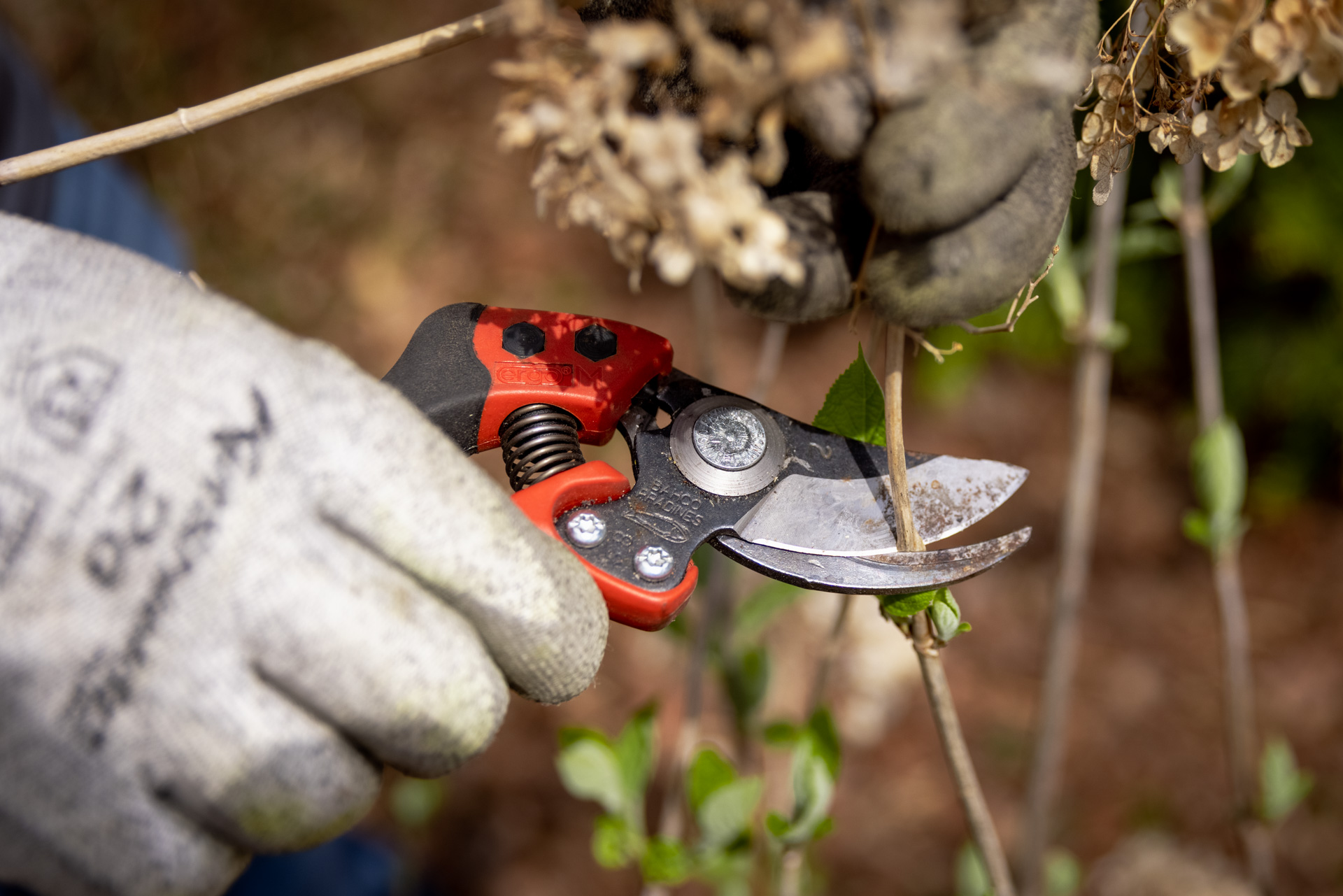
For many plants and landscaping features, pruning is vital for long-term maintenance and care. Young and old plants alike benefit, and it can notably impact your property’s aesthetic value and health if not done regularly or strategically. But, many people don’t think of pruning when taking care of their HOA properties or private yards.
Leaf cleanup, weeding, spreading fertilizer—many homeowners and property managers recognize the value of long-term preventative lawn care but don’t know every service available to them or why they’re important to the health and appearance of a property’s landscaping. Pruning is, however, an invaluable maintenance tool for improving the health, vibrancy, and longevity of your plants and landscaping features.
However, there are different types of pruning, and different plants respond differently to each technique used. Not all pruning accomplishes the same thing or should be used in the same way. If that sounds confusing, don’t worry. Lifestyle Outdoor is here to help! We have decades of experience caring for HOA properties and providing the absolute best concierge-level lawn care to properties.
That’s why you can trust us when we say that your HOA or private property should absolutely be taking advantage of pruning services, like dormant pruning and rejuvenation pruning in Kansas City.
Expert Property Care with Lifestyle Outdoor
The name Lifestyle Outdoor may be new, but we are bringing decades of expertise into HOA-focused landscaping and lawn care. We have been around long enough to know how to do HOAs and maintenance-provided communities the right way. We’re here all year to make sure your community is beautiful and well cared for.
Lifestyle Outdoor has unmatched experience taking care of HOAs and private property landscaping, and we know not all lawn care services are created equal. We want the HOAs we work with to have the best landscaping possible, and making informed decisions about the best way to care for your property is the #1 way to make that happen. That’s why we’ve created a comprehensive guide to dormant pruning and rejuvenation pruning in Kansas City.

So, continue reading to learn everything we have to teach you about dormant pruning and rejuvenation pruning and how they can benefit your landscaping and property!
Types of Pruning
Pruning can fulfill a variety of needs on your property. You can use it to remove limbs from trees and shrubs, cut back perennial flowers for winter, or improve the aesthetic value of your landscaping through winter. Another frequent use of pruning, which we are incredibly familiar with, is removing epicormic growth.
Also called “witches broom,” epicormic growth is a plant’s response to stress or damage. New growths will emerge from beneath bark or along limbs, and its tight growth patterns and gnarled appearance are deeply unattractive. Pruning is an excellent way to nip that issue in the bud. Pun very much intended.
Whatever the pruning you are doing or your preferred outcome, the team at Lifestyle Outdoor can help educate you on what will provide the best boost to your property. We are confident that pruning will be invaluable in maintaining and beautifying your HOA properties and homes.
So, the two types of strategic pruning we will perform at your property are dormant pruning and rejuvenation pruning.
Dormant Pruning in Kansas City
Dormant pruning is much like conventional maintenance pruning—the basic removal of unwanted growth throughout the year—but undertaken while the plant is dormant during the winter. Frequently more aggressive, dormant pruning uses larger, less targeted cuts and removal to encourage far more vigorous growth on the plant during springtime. This will almost always lead to a healthier, stronger plant.
Dormant pruning also frequently involves thinning out the plant. This requires cutting away canopy growth and opening up the plant’s understory to light and air. Thinning can be helpful when wanting to reduce the size of a plant, as well, and promotes healthy internal growth in the next season.
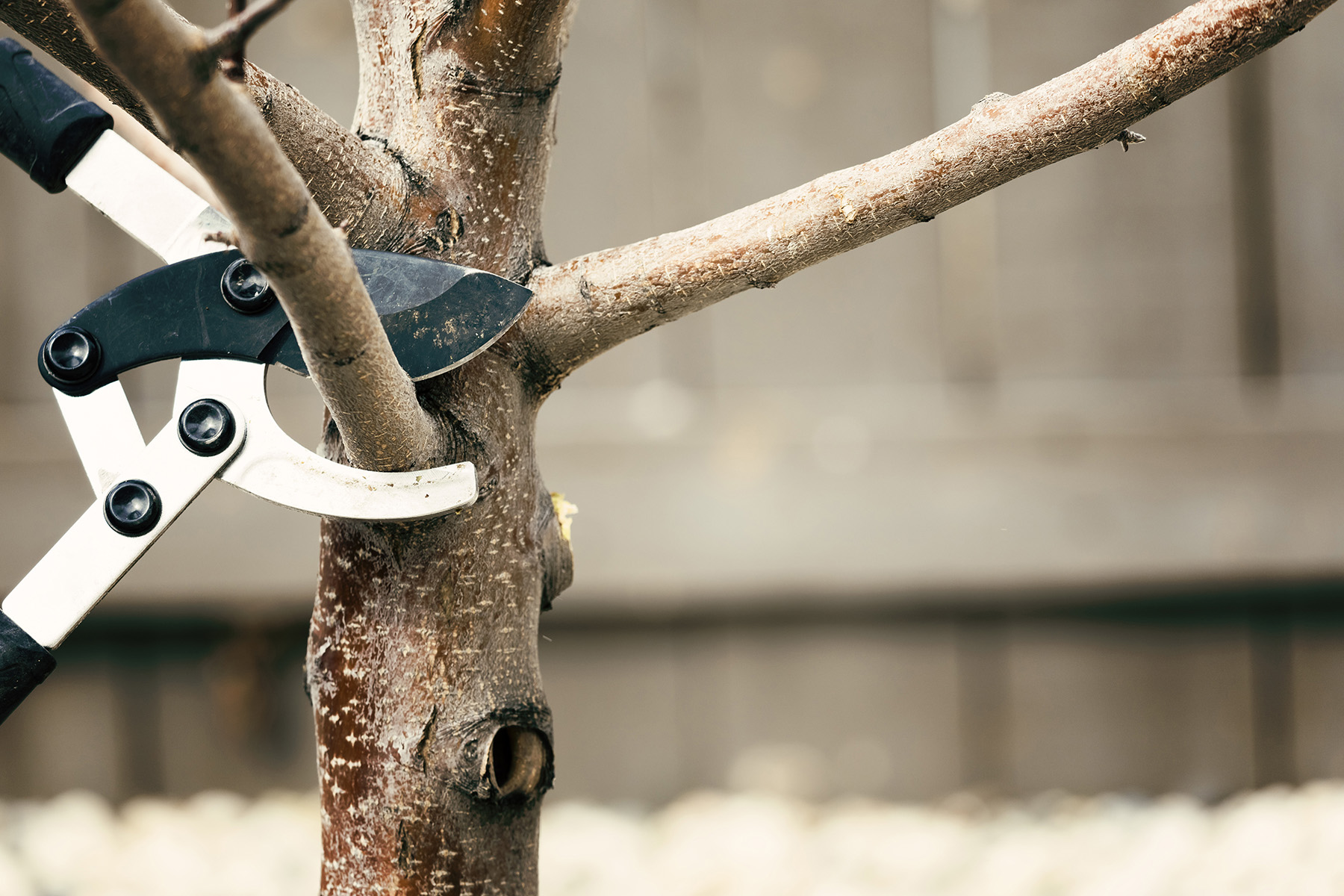
Rejuvenation Pruning in Kansas City
Rejuvenation pruning is the practice of removing all old, overgrown limbs to encourage new limb growth. Removing limbs or shoots from the plant encourages energy to go towards regrowing lost limbs and stems for the sake of active growth.
Most pruning is, though beneficial in various ways, mainly about aesthetics. Rejuvenation pruning isn’t necessarily meant to improve the plant’s attractiveness in the short term. Instead, the focus is on long-term health, vitality, and growth. Plants that require rejuvenation pruning in Kansas City will either be hard pruned or pruned gradually.
Hard Rejuvenation
Hard rejuvenation requires cutting the plant off almost to the ground and allowing it to regrow naturally during the next growth cycle. We recommend, when using hard rejuvenation pruning, cut the shrub to a height of 6-12 inches. The notable disadvantage to this technique is that not all shrubs will tolerate such drastic cutting. Additionally, you’re stuck with an ugly stump until the plant regrows. However, this technique leads to significantly faster rejuvenation and healthy growth in the plants that can tolerate the practice.
Gradual Rejuvenation
As the name implies, gradual rejuvenation accomplishes the same goal but over a much longer period. Instead of one intense, clear-cut, gradual rejuvenation allows you to remove old branches over a much longer period. By removing roughly ⅓ of the plant each winter for 2 to 3 years, you can optimally fill your plant with new growth and leave it healthier than before. This technique is also sometimes called renewal pruning. While slow, shrubs and other landscaping features that undergo gradual rejuvenation often look better in the landscape as they grow, leading to greater aesthetic appeal overall.
How To Get The Most Out Of Pruning
So, be it dormant pruning in Overland Park or rejuvenation pruning in Kansas City, how precisely do you make the most out of pruning your property? Well, simply put: it’s a matter of timing and experience.
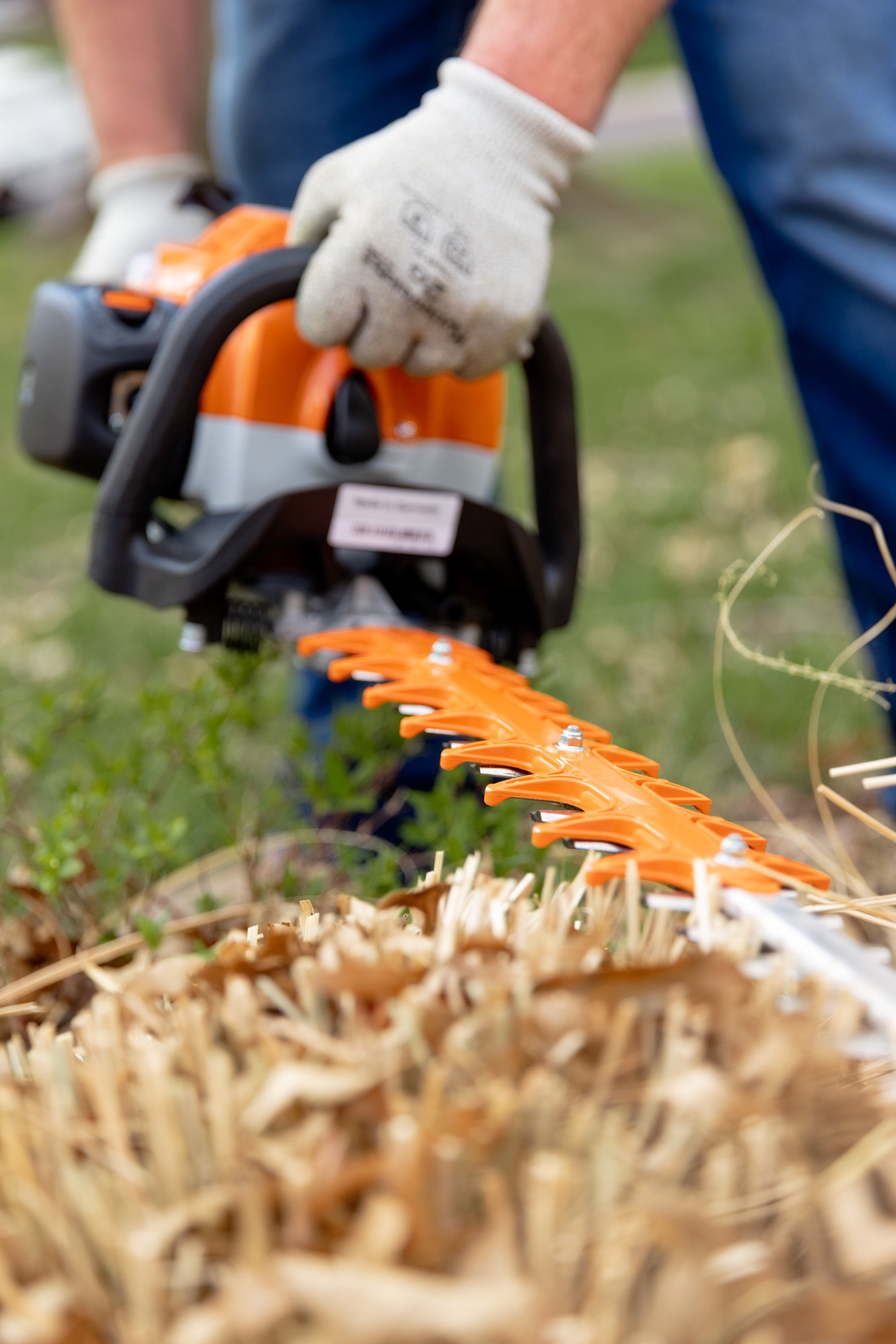
It’s important to prune before first budding because once the plant has budded, any pruning will be harming the new, fresh growth. This can exhaust the plant’s energy reserves and lead to unattractive or uneven growth for the rest of the year.
The ideal times to prune are after the first frost of the year, or in mid-to-late February, before first budding. These periods give you the most accurate window to make sure you are cutting back whatever old growth you want without harming the new growth you need for the plant to become beautiful and remain visually appealing. There isn’t one better time to prune between the two periods; it simply depends upon your schedule and seasonal weather.
Taking your time, planning ahead, and determining what works best for your property is vital for visually appealing and healthy outcomes for your landscaping.
Signs It’s Time To Prune
Beyond the time of year, the single largest indicator that you likely need to prune a plant is noticeable overgrowth. Wild or gnarled plants are unattractive and indicative of old or insufficient growth.
Though primarily an aesthetic issue, gnarled or overgrown plants can be tough to deal with. Each plant requires individualized care, which is what makes pruning so intensive. To maximize a plant’s growth potential and aesthetic quality, it’s essential to give it the attention and care it needs. This can make pruning on your own quite difficult
Common Pruning Mistakes
However, many people are invested in their yards and landscaping and want to be involved in caring for their property. This can lead to various mistakes and minor errors that can negatively impact a property’s landscaping. The most common mistake by far? Cutting too much.
Cutting too much from a plant while pruning is an easy mistake to make because not all plants respond to pruning the same way. Hydrangeas, for instance, bloom on new and old growth wood. So, some homeowners cut away large amounts of that old growth, unintentionally preventing their hydrangeas from growing that spring.
Likewise, property owners aren’t sure how much to remove when pruning and will perform a hard rejuvenation pruning on a plant that cannot handle it.
Pruning Safely
Any form of do-it-yourself pruning can have risks. We encourage you to turn to professionals.
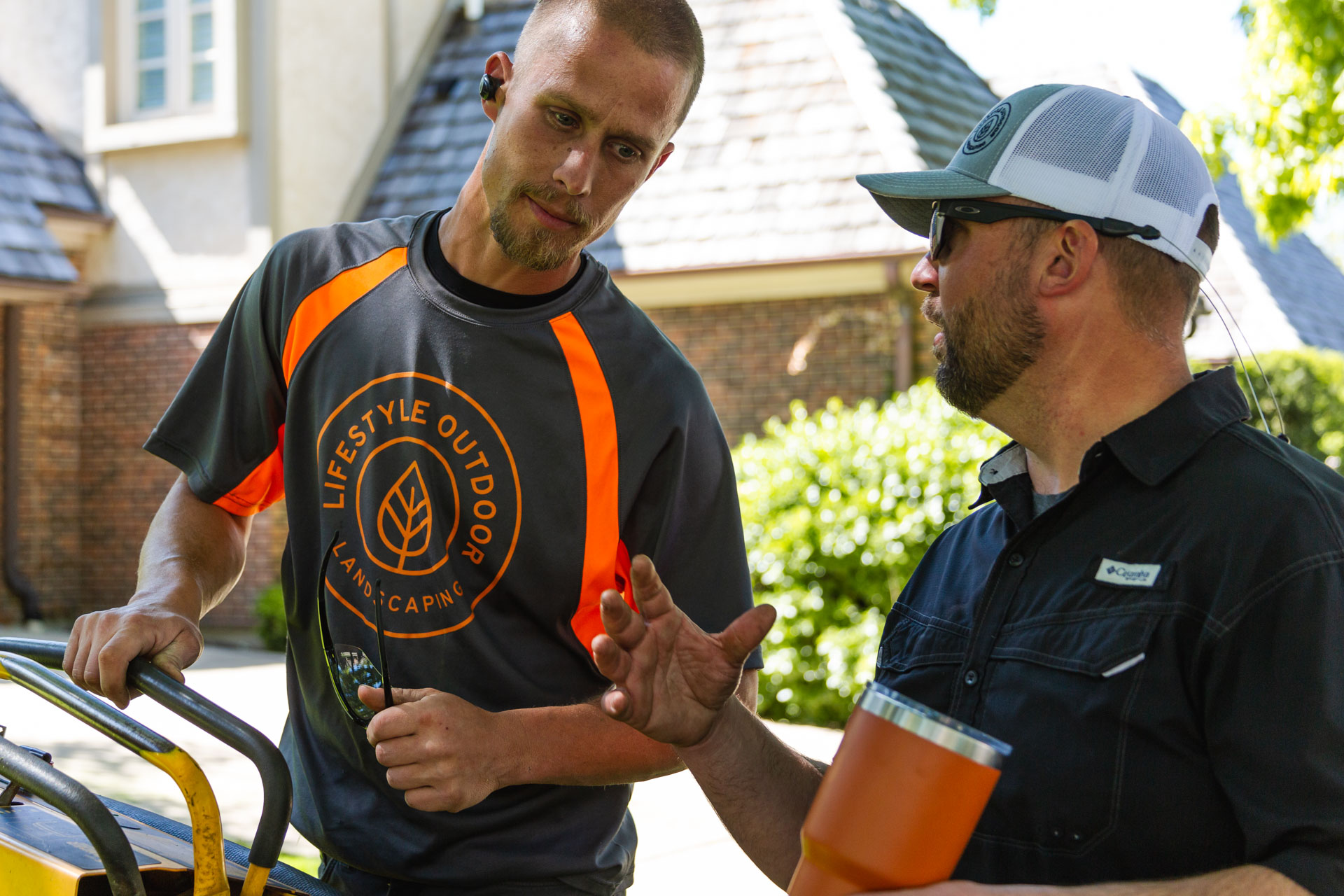
With larger landscaping features, like trees, you may potentially need to scale significant heights or remove sizable limbs, either of which can cause injury to people and property. Or, if pruning smaller plants, you might harm the plant in question. Over-pruning or improper pruning can damage stems and limb growth, potentially rotting or drying the plant.
In both instances, you’re creating unnecessary risks and potentially setting yourself up to have to spend more money later.
Winter Plant Care Calendar
Thankfully, the experts at Lifestyle Outdoor can offer the guidance you need to manage your landscaping successfully. That’s why we’ve created this handy winter lawn care calendar. It provides you with a simple, effective breakdown of when your property will need distinct preventative and preparatory services leading up to and throughout the winter.
October
-
- Move plants you can indoors before cold weather arrives. This can occur late in the month or into November if it is warm, but any houseplants you want to keep alive should be brought inside before the first frost to keep them from going dormant or dying.
-
- Prune perennials in preparation for temperature drops. Prune your perennials, so their new growth will be fresh come the start of spring and not built upon unattractive, dead growth.
-
- Plant spring-blooming bulbs. This is a great time to plant spring bulbs that you’re hoping to feature in your landscaping in Spring.
-
- Don’t stop mowing. Your yard still needs maintenance, even as winter begins to set in. Mowing helps maintain landscaping and improve appearance.
-
- Don’t stop watering. Continue to water your property, as necessary, until the first frost.
- Clear leaves as they fall. Leaf buildup can lead to fungus growth and bacteria in trees when Spring starts. Taking steps to clear the ground now can prevent that from happening.
November
-
- Fertilize your property. Layered fertilizer before the winter sets in is great for your yard’s health and vibrancy come spring.
-
- Winterize your irrigation systems.
-
- If you haven’t yet, prune perennials in preparation for temperature drops. It’s not too late to prune your perennials, but you need to be careful not to wait too long.
-
- Don’t stop mowing. Your yard still needs maintenance, even as winter begins to set in. Mowing helps maintain landscaping and improve appearance.
-
- Don’t stop watering. Continue to water your property, as necessary, until the first frost.
December
-
- If you haven’t yet, winterize your irrigation systems. You may not be too late. While this isn’t necessarily mandatory, it can protect your property from unwanted damage and save you money.
-
- Clear snow. Snow removal can be a great way to protect your lawn from standing-water buildup and moisture-based parasites in early Spring. Not to mention, it just makes caring for your property easier.
-
- Rake up leaves. As mentioned above, leaf buildup can lead to fungus growth and bacteria in trees when Spring starts. Taking steps to clear the ground now can prevent that from happening.
- Apply additional mulch. Once the snow is cleared and you can care for your beds and landscaping features, put down plenty of mulch. It’s important not to cut off your lawn’s nutrient supply because it’s winter.
- Don’t stop watering. Continue to water your property as necessary. Your houseplants, and some outdoor plants, may still require care depending on their variety and seasonality. Don’t forget to care for them just because it’s cold outside.
January
-
- Aerate your property. Aerating your lawn just before major winter weather, or as temperatures lower, can be good for your soil and provide the water a pathway into the ground for absorption into the dirt.
- Fertilize your property. If you haven’t dealt with a large first freeze yet, additional fertilizer and watering can be great for your lawn!
- Start preparing for spring! This may sound like a joke, but taking time to prep for spring, inventory what you want to be planted, and ready your landscaping equipment can be hugely helpful at the start of the new season.
February
-
- Prune your plants. February is the best month for pruning, but you need to make sure to prune before any budding.
- Start mowing. If weather permits, starting to mow in February can be a great way to promote early grass growth and clear debris and detritus from your yard or HOA property.
- Apply Dormant Oil. February is ideal for applying dormant oil to your trees and landscaping features if it is warm enough. Dormant oil preserves the health of your trees and shrubs by protecting against pests and fungus. As the weather begins to warm, dormant oil protects your landscaping from hatching parasites of new fungal growth.
- Start preparing for spring! Take time to prep for spring, inventory what you want to be planted. That way, when spring comes, you can have a plan to care for your lawn and keep your property looking stunning all year long.
If you’re interested in learning more about annual care for your lawn in Kansas City, check out resources like Johnson County’s Lawn Care Seasonal Guide and our Early Spring Checklist.
The Value of Preventative Care
Preventative lawn care, like dormant pruning or rejuvenation pruning in Kansas City, is vital to the long-term health and wellness of your lawn. Conventional wisdom states that it’s better to fix an issue before it becomes a significant problem rather than waiting until you have an emergency.
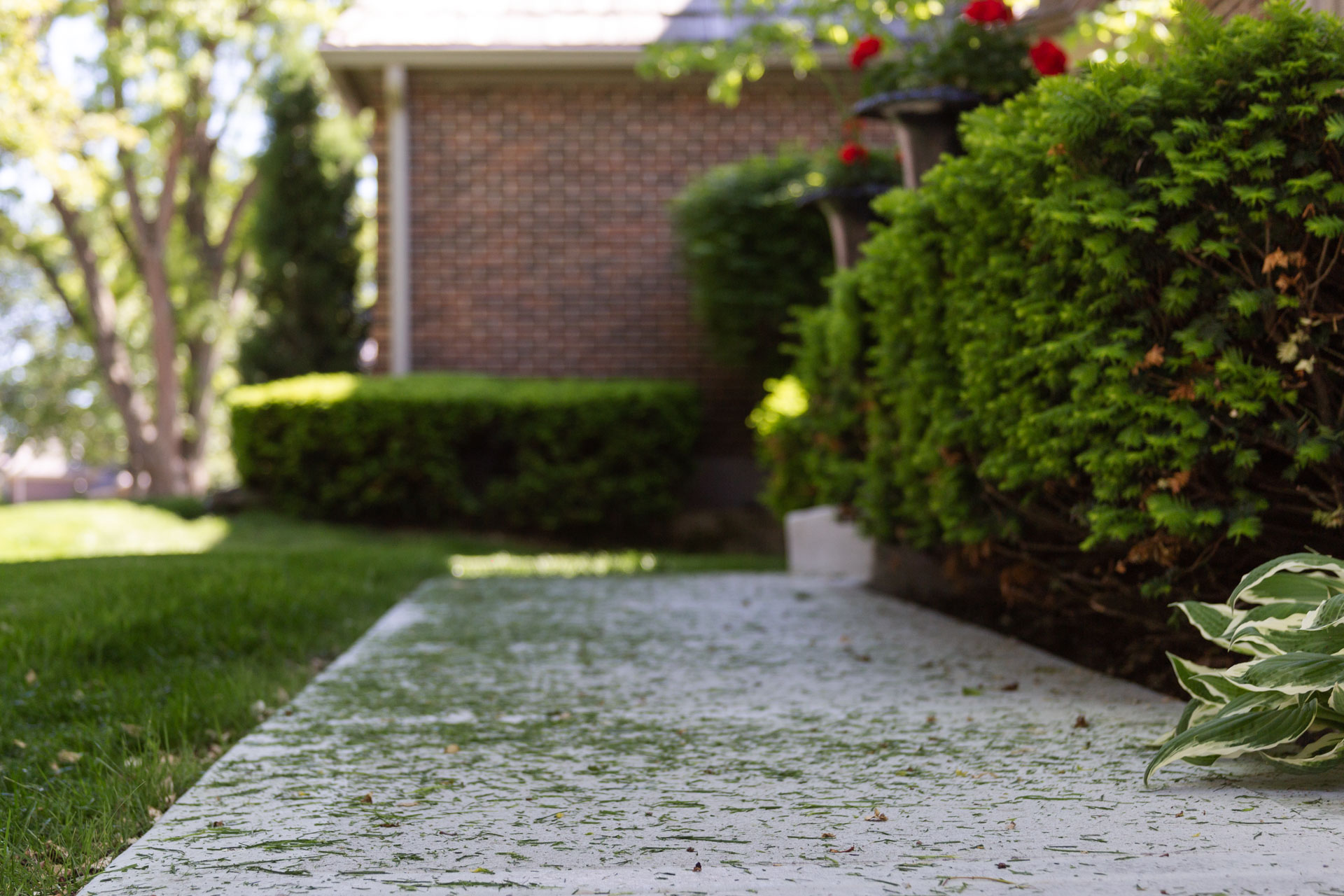
The same is true of landscape maintenance and lawn care. Caring for your plants and landscaping features before they are overgrown, unattractive, diseased, or potentially hazardous is always the safer, more cost-effective, and efficient way to care for your HOA or private property.
Preventative care is an invaluable tool for keeping your yard looking beautiful and keeping your lawn healthy year-round. Dormant and rejuvenation pruning, winter watering, applying dormant oil, fertilizing—simple landscaping care strategies can help any HOA maximize the beauty and vibrancy of its landscaping at every point in the year. All it takes is turning to experts!
Lifestyle Outdoor Provides the Pruning Services Your Property Needs
If you need dormant or rejuvenation pruning services, turn to the best landscaping and lawn care company in Kansas City. Lifestyle Outdoor offers complete landscaping maintenance services for your property’s needs year-round. We have decades of experience serving HOAs and private properties and a track record of complete client satisfaction.
Lifestyle Outdoor provides all Johnson County HOAs with unbeatable service through our HOA-focused landscaping and lawn care solutions. Our years of experience, commitment to building relationships, and dependable quality are why we’re the number one partner in all things HOA property maintenance.
Reach out to learn more about the landscaping, lawn care, and pruning services we provide or get a quote with our online quote tool. When it comes to dormant and rejuvenation pruning in Kansas City, there’s simply no one better. Discover the difference that THE white-glove service with a green thumb can make for your property today!

